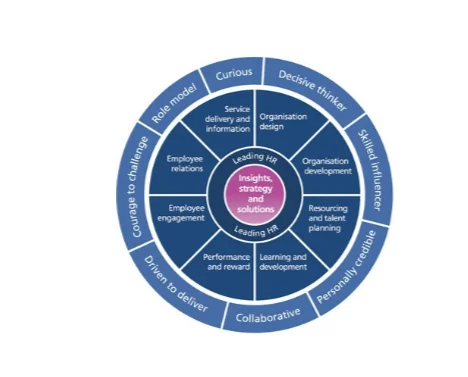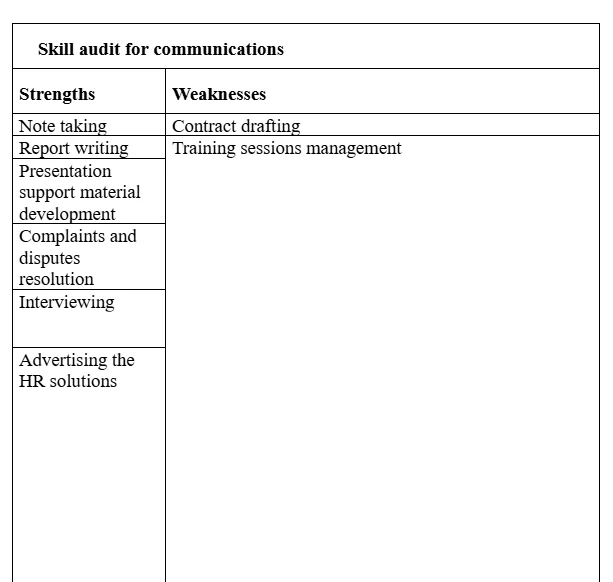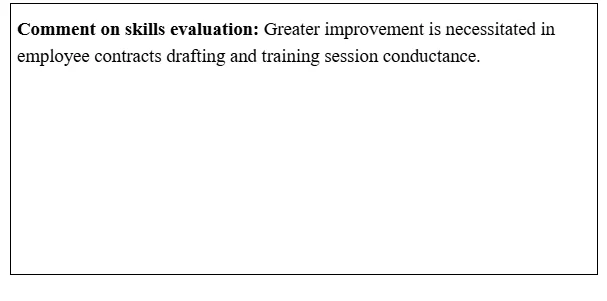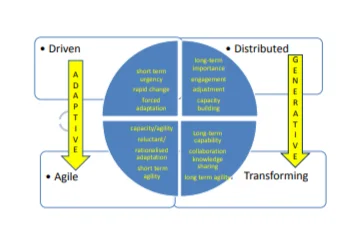Consultant Roles in Professional Development
Introduction
Concerning the profile of responsibility of a consultant employed at a particular consultancy firm, the corresponding study would be formulated to develop extensive and effective professional knowledge for the associated clientele so that greater understanding of the differences between individual and organisational learning based employee development and training. Furthermore, the study would be concentrating upon, at the organisational procedural levels, on the analysis of the necessity of continuous learning based professional development so that sustainable performance at the business levels could be achieved.
LO1: Analysis of employee knowledge, skills and behaviours required by HR professionals
P1: Determination of professional and appropriate knowledge, behaviours and skills required by HR professionals
The effective application of Continuous Personal Development (CPD) framework for the purpose of consistent human resource utilisation could be considered to be the standardised approach, in terms of a procedural instrument application, in the form of the CPD, to properly evaluate the knowledge extent and skill sets which could be in possession of the employees under consideration. Woodcock (2017) has been off the opinion that the rationale of such a framework application as well as the benefits which could be derived from it could be comprehended as the ability of the CPD mechanism to deliver each and every component based development of knowledge and professional competence regarding the learning behaviours of the employees. The primary focus of the CPD framework is on the transformation of the behavioural specifics, activities and knowledge possession of the employees of business enterprises under consideration. Such knowledge and competencies become perceptible in course of demonstration of the same by the human resources of the concerned business enterprises. The observations of Raes et al (2015) highlight the fact that the application of the CPD framework is essential in terms of setting a proper benchmark threshold to evaluate the excellence and efficacy of any HRDM process. The objective in this regard, as have been outlined by Armstrong and Taylor (2014), has been the addition of sustained value to the human resource management based working processes of the business organisations involving both the future responsibility scenarios and the current functionality based perspectives. Multiple segments comprise the structural integrity of any CPD framework. Initially, at the peripheral segments of the hypothetical circular structure of the aforementioned framework, 8 particular aspects could be observed which define the behavioural propensities of different employees within the working architecture of different business organisations. Bratton and Gold (2017) have outlined these elements in the following format:
1: Ability to formulate decisive thinking.
2: Possession of appropriate skill sets through which other could be influenced effectively.
4: Collaboration based functioning capability.
5: Result oriented impetus in work profiles.
6: Ability to manage work oriented challenges and contingencies.
7: Astuteness of providing leadership abilities to others.
8: The motivation of sustained improvement through persistent and continuous improvement in professional learning.

Hollenbeck and Jamieson (2015) have observed that the employee performance and competence developmental framework aforementioned, is primarily associated with the behavioural and professional competence performance assessment concerning the employees of business organisations. The emphasis is on the underscoring of the criteria of the required professional performance through assessment of the preferences, inclinations, activities and knowledge possession status of the organisational employees. The benchmark criteria utilised in the CPD structural framework becomes, thus, of crucial significance in this context of formulation of differential training services through which individual as well as professional developments of organisational human resources could be managed. Such criteria could thus be formulated on the basis of the business objectives which could be envisaged to be significant by the respective corporate institutions within the existing market scenario. Albrecht et al (2015) have opined that, the 8 behavioural aspects aforementioned in association to the CPD framework are primarily indicative of the various parameters on which the HRDM professionals could develop the individual perspectives. Apart from this, the accompanying specifics of professional proficiencies could be considered to be indicative of the plethora of transitional complications and associated requirements to overcome the same regarding the management of human resources within the ambit of business organisations. The implications of developing cross-disciplinary skills on part of the human resource personnel could be highlighted by the professional responsibilities which are reflected appropriately by the CPD framework. In this context, the perspectives of organisational professional responsibilities which outline the professional competence scenario transformation within the client organisations of the consultancy firm under consideration, are 11 in number. Through their research processes, Meijerink, Bondarouk and Lepak (2016) have outlined them as the following:
1: Organisational operations development.
2: Organisational operational design streamlining to avoid time overheads.
3: Management of planning and talent management.
4: Management of acquisition of human resources as well as their placement.
5: Provisioning of rewarding based on the performance measures.
6: Fostering of effective employee engagement.
7: Addressing of employee grievances through effective employee relationship management.
8: Service delivery mechanism improvement.
9: Critical information sharing mechanism establishment between the employees and the organisational hierarchy.
10: Evolving the HRDM strategic solutions on the basis of organisational insights to resolve the existing challenges regarding the previously stated perspectives of performance downturn.
11: Evaluation of the overarching implications of HRDM operational conduct in the context of market operations management.
Apart from these, the multifarious other capabilities and skills for any HR management officer could be considered to be significant in terms of operational management of human resources under differential organisational contexts. Such skills and competencies are as the following:
1: Establishment of effective and integrative cooperation between various departments of the employer/client organisations in capacity of the consultancy roles.
2: Provisioning of assistance to the line managers regarding various issues.
3: Undertaking effective co-ordination between the staff and policy stakeholders.
4: Promoting the management of equality and diversity encouragement to bolster the existing organisational culture.
5: Staff requirements related responsibility management.
6: Advisory service provisioning in the measure of emoluments and remuneration remittance functions.
7: Providing assistance to the employer organisations to develop and apply efficacious HRM policies primarily concerning the work conditions and opportunity management.
8: Management of training and learning course formulations.
9: Development and imposition of disciplinary structures and policies.
10: Attendance compliance management.

P2: Analysis of a completed personal skills audit



LO2: Factors of implementation and evaluation of inclusive learning and development for sustainability in drive of business purposes
P3: Differences of organisational and individual learning, training and development.
Cohen (2015) has outlined the necessity to ascertain the variegated dimensions of the specifics of the organisational processes to drive business operations in the most sustainable manner through the processes of individual learning and development through training within the encountered operational perspectives. This could be better explained as financial and personnel based contribution of resources by the organisational hierarchies over any particular time period. The core objective of such contributions is to enable the employees to develop themselves through undergoing the provided professional learning and training processes. Mechanisms of performance management and executive reward issuance determine the propriety of HRM operations involving multiplicity of fluctuations. Such fluctuations, such as those of financial perspectives such as share price variations, could extensively influence the outcomes of resource allocation decisions regarding according the employees with differential and multimodal learning/training perspectives. In this context, Stone et al (2015) have specified the necessity of forward thinking perspectives which are required to be practiced at the managerial levels so as to properly delineate the employee necessities in the existing organisational work scenarios. These necessities could be countenanced as the requirements of specific and thorough training for particular segments of employees so that such working personnel could derive sustained benefit from such supervision based training activities. Such endeavours could be brought to fruition through sustainable HRM practices and these require extensive effort and material resource investment.
Katzenbach and Smith (2015) have observed that the fundamental characteristic of the previously mentioned processes of integrated human resource development for any organisational entity, concerning the incumbent operational structures, is the overarching aspect of sustainability of change so that adaptation to the transformed business environments and associated situational contingencies could be managed effectively. To this effect, Zhong, Wayne and Liden (2016) have opined that the appointments of HR officers are imperative on the implementation of consistent development at the professional levels so that competency obtainment in the operational processes could be achieved through effective management of human and material resources. Such an achievement could effectively safeguard the careers of managers and subordinate employees alike.
Continuous Professional Learning (CPL)
The CPL is completely different from that of personalised learning/training processes since the CPL could ensure, within any business enterprise, the standardisation of human resource performance through capability enhancement at both the individual and collective levels. Brulin andSvensson (2016) have stated that CPL also provides extensive assistance to the HRM officials to effectively enhance and sustain the levels of professional skills and knowledge of the employees so that adaptation to changed policy and operational scenarios could become effective. This further enables the HR officials to make meaningful as well as beneficial contributions to the organisational working culture. This perspective could be further explained to be an effort in the alignment of business processes with the organisational design. This could be better understood to be the insight which could recur consistently for the purpose of effective co-ordination management in between the different segments of business organisations under consideration. Another purpose of the CPL is providing the employees with an effective support mechanism through which business exigency based situations could be managed in a pre-emptive manner. Wilton (2016) has determined one factor of particular significance in terms of management of HR and other departmental work responsibilities for the purpose of ensuring of sustainability of alignment of organisational operational designs with the objectives. Such a factor is the development of a single point of co-ordination between the business methods, strategies and tactical procedures and the organisational values. This could effectively manage the behavioural patterns of both learning and work of the individual employees. This factor is primarily oriented towards survival perspectives of the organisations which could apply it so as to develop standardised achievement criteria in the business processes. This becomes of particular significance while transitional or transformational sequences could occur within the external business environment of any business discipline. Dong et al (2017) have observed such aspects as the actualities which could establish the differentiation between the necessities of learning and training pertaining to different employee groups of various business entities.
Furthermore, the leadership element distribution within the existing working architectures in the most efficacious manner so that human resource engagement could be managed in the most appropriate manner, could be determined to be another factor of influence within the discourse of CPL. This acquires gradual significance within any existing business entity. Such engagements with the employees, at the HR managerial levels, is beneficial from the perspective that the employees could be persuaded to exhibit their specific behavioural inclinations regarding their work and this could expose their existing shortcomings in terms of professional competence involving different practices and responsibilities. Such information could then be utilised for the purpose of outlining the parameters of the necessities of learning and training for the employees and new organisational developmental initiatives could be designed with such perspectives. One particular necessity has been identified by Runhaar and Sanders (2016) as the implementation a top down regimented approach across the organisational operating spectrums, through which knowledge and skill based expertise of the individual employees could be enhanced as well as the inter-personal communication between various levels of human resources could be effectively strengthened. Such an approach could effectively orient the individual efforts of learning towards the organisational mission and vision so that the personalised measures of learning and training, put into practice by the organisational managerial hierarchy, could become productive in development of the lateral capabilities of the employees.
P4: Necessity for continuous learning and professional development for sustainable business performance
Sustainable business performance has been pointed out by Nankervis et al (2016) to be the factor which underscores the HRDM process of any business entity. This factor could be driven by a host of deliberate insights such as operational responsibility management particulars related with learning and training management as well as details of processes of training regime development. Hollenbeck and Jamieson (2015) have stated that it is always imperative for any corporate organisation to implement such sustainability perspective within the administrative as well as planning discourse of HRM. The outcome could be measured in the extent of progression processes of organisational learning environment where implemented employee training processes could be brought to the maximised positive fruition. For an instance, one particular human resource enabling factor pertaining to sustainability of business performance is the alignment of workforce management planning with that of the exactitudes of work conditions which could exist within the business discourses of the organisations. It is vital for putting the existing employees to work as per their subsisting and prospective capabilities. On the contrary to this, Epstein (2018) has stated that the process of individual training or learning is mostly subjective as the occurrence of it is associated with short term objective achievement based perspectives. Thus, individual learning is mostly indicative of an ad hoc approach by the learner who could be influenced by an immediacy of requirements.
Al-Haddad and Kotnour (2015) have opined that operational perspective development through leadership element formulation could be considered as delegation of leadership responsibilities to formulate a greater process of inclusivity within any particular business organisation, for instance, that of McDonalds. The prime benefit of this could be acknowledged as the development of a definitive strategy through which subordinate employees could be empowered so that greater operational streamlining could be achieved through active impetus in self-capability development. The emphasis is always on the development of innovative thinking abilities within the employees, the institution of corporate governance imperatives and encouragement innovation opportunities to properly manage creativity within the discourse of HRM (Runhaar and Sanders, 2016). Thus, the delegated leadership approach highlights another difference between personal and organisational learning since such methodical approaches are mostly self-regulated in nature. Ultimately, it is the sharing of purpose between the organisational hierarchy and the employees which could be achieved through continuous learning based professional development.


LO3: Application of knowledge and understanding of high-performance working (HPW) concerning employee engagement and competitive advantage
Marchington (2016) has highlighted that the orientation of any organisational business functionality represents the efforts invested towards achievement of competitive advantage by the concerned business organisations. The professional competencies of organisational employees become the elements on the basis of which competitive leverage could be managed. To this effect, Shen and Benson (2016) have suggested that the concept of High Performance Work Practices (HPWP) represents the conceptual constructs through which the proper management of changing priorities of the HRM processes could be performed. From this perspective, the HPWP could be acknowledged as the instruments which could be utilised by the HR officials to infuse efficacy in the organisational performance management scenario. Particular emphasis is concentrated upon management of change concerning transformation from the organisational hierarchy based workplace management practices to a greater participative process of management of human resources. Huang et al (2016) have suggested that HPWP framework signifies the information, skills and knowledge which could be utilised to promote better performance management within the concerned business organisations. The objectives are profitability achievement, decline in employee attrition rates and enhancement of employee productivity. Thus, Guan and Frenkel (2018) have determined the process of HRM bundling as the core constituent of the applications related to HPWP framework. This framework is further expanded by 2 additional methods such as internal coherence in operational practices and horizontal fit of the mechanisms of HRM. Such methods could become instrumental to institute effective changes within the business organisational functionality discourses through which the formulation of the most beneficial working environment could be developed. This could be considered to be the key outcome of application of HPWP based systems within the structural architecture of business institutions. Apart from this, Nankervis et al (2016) have outlined other tangible outcomes of application of HPWP as the following:
1: Development of an effective organisational culture which could be simultaneously accommodative and advantageous for the employees.
2: Meaningfulness of work engagement fostering.
3: Optimisation of resource management.
4: Progressive practices implementation.
5: Development of manually supportive operational frameworks.
6: Discouraging of isolative processes.
7: Addition of value to the organisational initiatives.
8: Achievement of commonality of work approaches and philosophies to formulate synergistic work discourses.
Cohen (2015) has stated that HPWP is an entire framework which has multiple procedures regarding HRM practices for the purpose of development of employee knowledge and professional competencies. The ultimate objective is to formulate a qualitative reservoir of human resources at the organisational disposals to garner market leverage. This framework is effectively utilised to communicate the organisational vision and intention to the employees to form the basis on which the working personnel could transcend the existing individual limitations.

LO 4: Performance management, collaborative working and effective communication evaluation to support high-performance culture and performance management and accountability commitment
According to Wilton (2016), high performance based work culture based on performance management could be perceived to be the outcome of effective enhancement of organisational performance enhancement efforts. The underscoring procedures, as have been described by Al-Haddad and Kotnour (2015), are as the following:
1: Accountability infusion.
2: The sensitisation of the employees concerning the sense of responsibility.
3: Effective supervision through monitoring of procedural advancements in HRM.
4: Provisioning of critical appreciation to effective employee performance.
5: Feedback generation and performing follow through actions with the maximised measure of integrity.

Dong et al (2017) have delineated the significance of performance management, effective communication and collaborative working as components of HPWP. The processes are developed to support the following:
1: Criticality of according particular assignments to individual employees on the basis of their observed capabilities.
2: Managing the performance of particular work activity related engagements at the individual levels.
3: Execution of business contingency based responsibilities.
Conclusion
The application of proper knowledge to comprehend the methods of High Performance Working mechanisms has been the core objective of the preceding research. To this effect, the purpose of the preceding research study has been to analyse the most beneficial impacts of application of professional learning cycles based theoretical constructs so that implementation of continuous learning procedures at the human resource management levels could be achieved. The emphasis has been on the establishment of support strategies, such as High Performance Working (HPW), to contribute to efforts of fulfilment of necessities of continuous organisational development within business organisation, from the perspectives of Human Resource Development Management (HRDM).
Reference List
Albrecht, S.L., Bakker, A.B., Gruman, J.A., Macey, W.H. and Saks, A.M., 2015. Employee engagement, human resource management practices and competitive advantage: An integrated approach. Journal of Organizational Effectiveness: People and Performance, 2(1), pp.7-35.
Al-Haddad, S. and Kotnour, T., 2015.Integrating the organizational change literature: a model for successful change. Journal of Organizational Change Management, 28(2), pp.234-262.
Armstrong, M. and Taylor, S., 2014. Armstrong's handbook of human resource management practice.Kogan Page Publishers.
Bratton, J. and Gold, J., 2017. Human resource management: theory and practice. Palgrave.
Brulin, G. and Svensson, L., 2016. Managing sustainable development programmes: A learning approach to change. Routledge.
Buchanan, D.A. and McCalman, J., 2018. High performance work systems: The digital experience. Routledge.
Cohen, D.J., 2015. HR past, present and future: A call for consistent practices and a focus on competencies. Human Resource Management Review, 25(2), pp.205-215.
Dong, Y., Bartol, K.M., Zhang, Z.X. and Li, C., 2017.Enhancing employee creativity via individual skill development and team knowledge sharing: Influences of dual‐focused transformational leadership. Journal of Organizational Behavior, 38(3), pp.439-458.
Epstein, M.J., 2018. Making sustainability work: Best practices in managing and measuring corporate social, environmental and economic impacts.Routledge.
Guan, X. and Frenkel, S., 2018. How HR practice, work engagement and job crafting influence employee performance. Chinese Management Studies.
Huang, L.C., Ahlstrom, D., Lee, A.Y.P., Chen, S.Y. and Hsieh, M.J., 2016. High performance work systems, employee well-being, and job involvement: An empirical study. Personnel Review, 45(2), pp.296-314.
Jiang, J.Y. and Liu, C.W., 2015. High performance work systems and organizational effectiveness: The mediating role of social capital. Human Resource Management Review, 25(1), pp.126-137.
Meijerink, J.G., Bondarouk, T. and Lepak, D.P., 2016. Employees as active consumers of HRM: Linking employees’ HRM competences with their perceptions of HRM service value. Human resource management, 55(2), pp.219-240.
Raes, E., Kyndt, E., Decuyper, S., Van den Bossche, P. and Dochy, F., 2015. An exploratory study of group development and team learning. Human Resource Development Quarterly, 26(1), pp.5-30.
Shen, J. and Benson, J., 2016. When CSR is a social norm: How socially responsible human resource management affects employee work behavior. Journal of Management, 42(6), pp.1723-1746.
Zhong, L., Wayne, S.J. and Liden, R.C., 2016. Job engagement, perceived organizational support, high‐performance human resource practices, and cultural value orientations: A cross‐level investigation. Journal of Organizational Behavior, 37(6), pp.823-844.
What Makes Us Unique
- 24/7 Customer Support
- 100% Customer Satisfaction
- No Privacy Violation
- Quick Services
- Subject Experts



